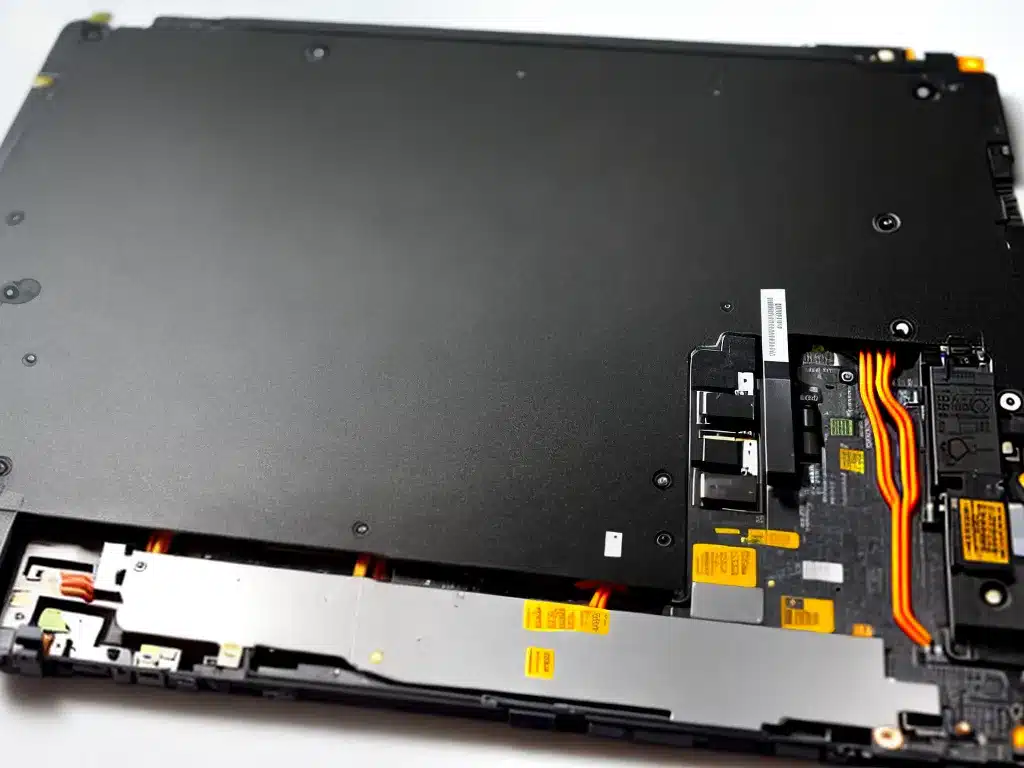
Introduction
A laptop battery that won’t charge can be incredibly frustrating. As someone who relies on my laptop for work and entertainment, I’ve experienced this issue before and learned how to properly diagnose and replace a faulty laptop battery. In this comprehensive guide, I’ll share everything I’ve learned about replacing a laptop battery that won’t charge so you can get your laptop up and running again.
Symptoms of a Faulty Laptop Battery
Here are some common signs that your laptop battery needs to be replaced:
- Your laptop shuts down abruptly even when plugged in
- Your battery percentage drops rapidly even when not in use
- Your laptop indicates the battery is “plugged in, not charging”
- Your laptop runs slowly and apps crash frequently when unplugged
- You get a “replace battery” warning message
If you notice one or more of these symptoms, it’s likely the battery itself is no longer functioning properly.
Diagnosing the Issue
Before replacing the battery, it’s important to diagnose the issue to confirm the battery is actually faulty. Here are some troubleshooting steps to take:
Check Battery Health
Use your laptop’s built-in battery diagnostics tool to check the battery’s health status and look for any error codes. This will confirm whether replacing the battery is necessary.
Update Drivers and BIOS
Outdated drivers and BIOS could prevent proper battery charging. Update them to see if it resolves the issue.
Test with Different Charger
Try charging with a different known-good charger to rule out the possibility of a faulty charger.
Reset Laptop to Default Settings
Issues with power management settings could prevent charging. Reset your laptop to defaults.
Let Battery Fully Drain
Allow the battery to completely drain then try charging it again. This can recalibrate the battery.
If you’ve tried all these steps and the battery still won’t charge, replacement is likely needed.
Choosing a Replacement Laptop Battery
When selecting a replacement laptop battery, keep the following criteria in mind:
-
Compatibility – Choose a battery made specifically for your laptop model. Cross-check the part number.
-
Capacity – Match the same capacity (mAh) as your original battery for optimal performance. Higher is okay.
-
Quality – Stick with reputable brands and check reviews to avoid cheap knockoffs. OEM batteries are ideal.
-
Warranty – Opt for batteries that come with at least a 1 year warranty for peace of mind.
-
Price – Genuine OEM batteries tend to be more expensive. Third-party options are cheaper but riskier.
I’ve had the best luck purchasing replacement batteries directly from my laptop manufacturer. The price is higher but worth it for the guaranteed compatibility, quality, and warranty.
How to Replace a Laptop Battery
Once you have the new battery in hand, here are the steps to replace it:
Gather Required Tools
You’ll need a Phillips-head screwdriver and possibly a plastic pry tool to open up the battery compartment. Check your laptop manual for required tools.
Backup Important Data
Save your work and back up any important data in case something goes wrong during the replacement process.
Disconnect and Remove Old Battery
Power down the laptop, unplug the AC adapter, and disconnect the old battery. There may be screws to remove to access it. Gently pry it out if necessary.
Install New Battery and Secure in Place
Slide the new battery into the compartment and press down firmly to secure it. Replace any screws or covers.
Calibrate the New Battery
Fully charge the new battery and let it drain a few cycles while disconnected from AC power. This calibrates it for maximum runtime.
And that’s it! With the right replacement battery, your laptop should now be able to hold a charge again. Be sure to properly dispose of the old battery. Overall, if you take your time and follow each step carefully, you can successfully replace a faulty laptop battery on your own.
FAQs About Replacing a Laptop Battery
How can I get maximum lifespan from my new laptop battery?
- Avoid completely draining or overcharging the battery
- Use conservation modes when unplugged
- Remove battery and run on AC power when possible
- Avoid exposing battery to high temperatures
- Limit battery charge to 60% for long-term storage
What tools do I need to replace a laptop battery?
- Phillips-head and/or Torx screwdrivers
- Plastic pry tool (may be needed)
- Anti-static wrist strap (recommended)
Can I replace the battery myself or should I take it to a repair shop?
- Replacing a laptop battery is generally a simple DIY fix for most users
- However, if you don’t feel comfortable disassembling your laptop, getting professional help may be wiser
How can I properly dispose of an old laptop battery?
- Tape the battery terminals to prevent shorts or sparks
- Take it to a battery recycling center or hazardous waste collection site
- Some retailers and manufacturers also accept old batteries for recycling
Are third-party replacement batteries safe to use?
- Generally yes, as long as you buy from a reputable brand
- However, OEM batteries are the safest option and provide the best compatibility
- Avoid no-name batteries with no reviews or certifications
Conclusion
Replacing a worn-out laptop battery that refuses to charge is a straightforward process if you select an appropriate replacement battery and carefully follow each installation step. With a compatible new battery installed, you can use your laptop away from AC power once again. Just be sure to calibrate and care for the new battery properly so it enjoys maximum longevity. Let me know if you have any other laptop battery replacement questions!












